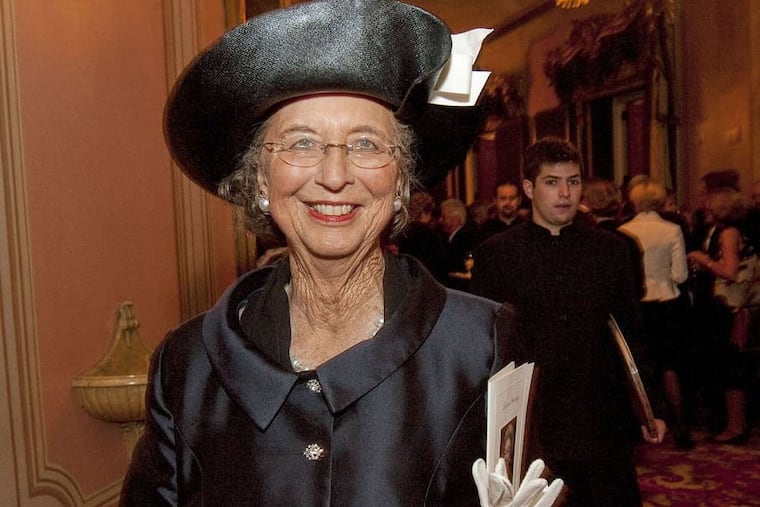With a Cézanne as star, Dodo Hamilton paintings, jewelry, and more to be auctioned off at Freeman's
La Vie des Champs - Life in the Fields - by Cézanne was shown at the Philadelphia Museum of Art in 1996

A small Cézanne canvas. A Goyard steamer trunk. An emerald-encrusted silk purse.
Paintings, furniture, jewelry, and other items — about 320 pieces in all — from three residences of Dorrance H. "Dodo" Hamilton, the late Campbell Soup Co. heiress, will be auctioned off in about 150 lots this spring at Freeman's.
The proceeds will go to Hamilton's estate, said Freeman's chairman Alasdair Nichol.
Among the major pieces to be sold at two separate auctions are paintings by Paul Cézanne, Childe Hassam, Daniel Garber, Maurice Prendergast, and John Henry Twachtman; a 16.56-carat emerald-cut diamond and platinum ring; and a porcelain collection with pieces by Meissen, Staffordshire, and Derby.
A granddaughter of John T. Dorrance, who invented the soup-condensing process, Hamilton cut a prominent figure in the cultural and philanthropic realms of Philadelphia and Newport, R.I. She died in April at her home in Boca Grande, Fla., at age 88.
"She wasn't an ostentatious person," Nichol said, "and the collection really reflects her interest in the natural world and attachment she had to certain places in a few works by [William Trost] Richards associated with the sea, two Hassam works that related to Massachusetts, the Garber Pennsylvania landscapes, [Pierre-Joseph] Redouté watercolors, and a couple of nice Audubon prints."
All three of her homes — including the one in Strafford — also are going on the market, Nichol said.
Of the art, Freeman's has put its greatest salesmanship behind La Vie des Champs (Life in the Fields) by Cézanne, painted in 1876-77 and perhaps familiar to some from its inclusion in the 1996 Cézanne retrospective that showed at the Philadelphia Museum of Art. The small oil, about 11 inches by 14, shows five figures in a stretch of grass among the trees. A female figure with a jug atop her head stands at the center of the scene, with a villa high on a hill in the distance. It is part of a series of "rural genre images" the artist produced mostly in the mid-1870s, according to the catalog produced for the highly popular 1996 Cézanne show.
"They have the timeless quality of visual fables," the book says. "Cézanne never produced anything like them again."
The work will travel to London, Paris, Hong Kong, and New York for public and private viewings — including the diamond and platinum ring — before returning to Philadelphia for auction. Freeman's estimates it will fetch between $1.2 million and $1.8 million.
Hamilton appeared to be fond of American impressionists, and among those canvases to be sold are Garber's Morning Train (estimated to sell for $200,000 to $300,000), a 1924 work taking in a view of the Delaware River from the hill at Point Pleasant, Pa.; and his Water Birch — Springtime ($120,000 to $180,000), a scene of New Hope from 1919.
Two plates from Audubon's The Birds of America will be on the block: "Roseate Spoonbill" (estimated at $40,000 to $60,000) and "Great White Heron" ($30,000 to $50,000).
The paintings, furniture, decorative arts, and other items will be offered for auction April 29, with the jewelry auction of pieces by Tiffany & Co., Cartier, and others slated for May 9 — both at Freeman's on Chestnut Street, with showings of the items starting April 21.
Selling personal effects in this way, in a whole collection rather than in pieces through various routes, is good for the bottom line, said Nichol, who put the low-end estimate of total proceeds at $3.8 million, and said that the sale needed to be in Philadelphia, "where her name had the most resonance."
The bottom line, though, wasn't necessarily what Hamilton herself kept in mind as she assembled these pieces over a lifetime.
"I don't think she was a person who had an eye on the market," Nichol said. "These are things she liked to live with. She had a good eye for things she enjoyed, nice things. But it was about horticulture. Place was important, and the natural world. And the sea."